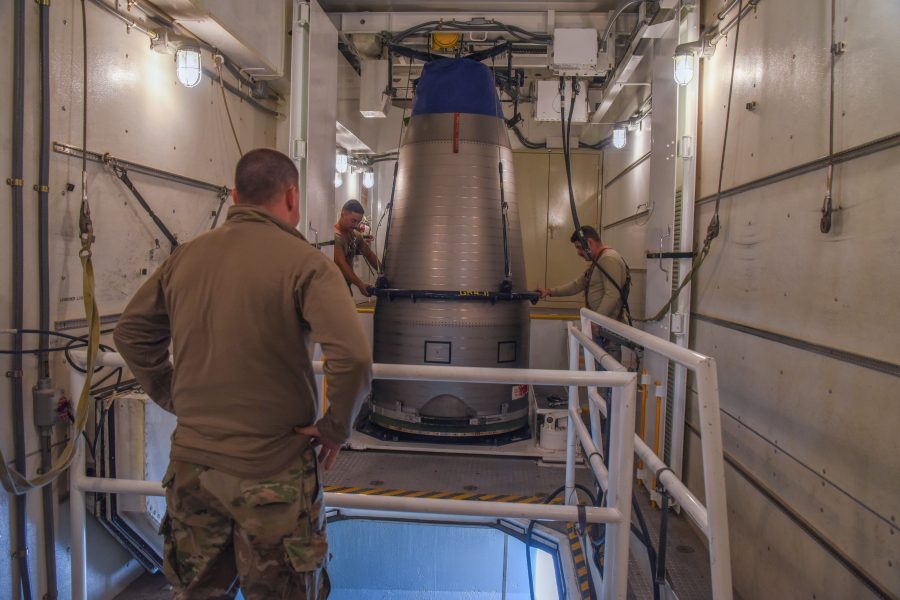The Air Force Nuclear Weapons Center is splitting its management of intercontinental ballistic missiles in two as the next-generation Ground-Based Strategic Deterrent progresses.
AFNWC’s former Intercontinental Ballistic Missile Systems Directorate at Hill Air Force Base, Utah, will now be the Minuteman III Systems Directorate and the Ground-Based Strategic Deterrent Systems Directorate.
“This restructuring is a natural progression of the Air Force’s increasing focus on the modernization of the ICBM, the third leg of our strategic nuclear triad,” said Maj. Gen. Shaun Morris, AFNWC commander and Air Force program executive officer for strategic systems, in an Air Force Materiel Command release. “It also allows us to centralize some functional requirements, such as manpower and security, at a central operating location at Hill AFB, thus freeing up our subject matter experts to better focus on both sustaining the Minuteman III and acquiring the new GBSD weapon system.”
The Minuteman III directorate will focus on maintaining the operational readiness of the aging ICBM system, while the new GBSD directorate will focus on bringing the new system online. The $22 billion GBSD program will include more than 600 missiles. Northrop Grumman is now the sole contractor, after Boeing pulled its bid, and the company expects to deliver the new missiles in 2029.
“GBSD will ensure uninterrupted deterrence against current and future adversaries through 2075,” said Col. Jason Bartolomei, who will lead the new directorate and continue serving as the system program manager for GBSD. “At the same time, it will provide more efficient operations, maintenance, and security by modernizing a critically aged infrastructure and lowering lifecycle costs,” Bartolomei said.
Separate from these two, the AFNWC also has directorates overseeing Air Delivered Capabilities; Nuclear Command, Control, and Communications Integration; and Nuclear Technology and Integration Directorate. The move comes after the Air Force Life Cycle Management Center realigned its oversight of fighters, bombers, and mobility aircraft. The Fighters and Bombers Directorate has been split into a Fighters and Advanced Aircraft Directorate and a Bombers Directorate. The Tanker Directorate also moved to the Mobility and Training Aircraft Directorate.
